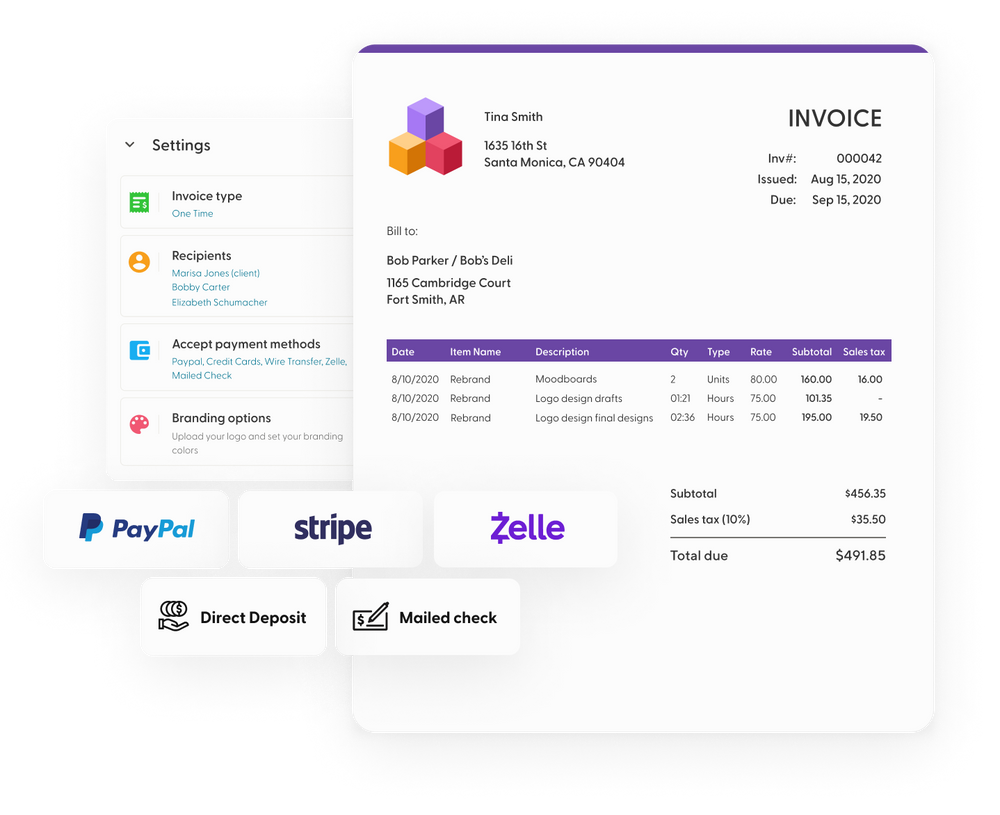The question of whether to charge an hourly rate or a project fee is one that freelancers in every sector face. Depending on your freelance services, competence, and target audience, both techniques offer advantages and disadvantages.
In this post, we'll examine the advantages and disadvantages of hourly and per-project pricing to determine which method is ideal for your freelancing business.
Freelancers experience a dilemma when it comes to overpricing jobs.
Setting your freelance hourly rate may be challenging, especially if you're just starting out or attempting to boost your rates. The higher the amount of cash you need to make, the more strategic your rates must be. What worked well at the beginning of your freelance profession may not work as you gain more knowledge and skill, and you might be losing money in effect. When you factor in unanticipated occurrences and new advancements in your business, you may find yourself moving between hourly rate and project fee many times over your career. There is no one-size-fits-all approach to pricing your services. It's entirely up to you to figure out what works best for you.
Among freelancers, charging by the hour (or by the day) is a typical pricing strategy. It's when you bill your customer for a specific number of hours performed, no more or less. You keep track of how much time you spend on a job and add the hourly pricing total in your invoice.
Charge by the hour has a number of benefits.
The “by hour” fee model is commonly understood by clients. It's easy enough for everyone to grasp. You labor for three hours at a rate of $40 per hour, for a total of $120. For all sides, everything is extremely obvious.
With an hourly rate, clients are less inclined to engage in scope creep. When they require a little additional work within the project boundaries, this is known as scope creep. That's it after the hour is up. There is a distinct line between the two.
If you have strong time-tracking and invoicing tools, hourly billing is typically easier than project billing. The technology allows you to concentrate on client work while the administrative and financial tasks are still mostly taken care of for you. Using invoicing templates saves even more time which you can spend on serving your clients. Going further, you can use tools such as Indy’s invoice generator to create and send invoices which help you to manage your finances as a freelancer.
The difficulties of charging by the hour
The hourly price model penalizes experienced freelancers for their speed, efficiency, and knowledge. You're still earning the same amount if you can complete a project in half the time as a slower and less experienced freelancer. As you grow more productive, this limits your capacity to earn more money.
It might be difficult to estimate how long activities will take for larger and more intricate projects. Clients may grow disgruntled if you are frequently increasing the number of billed hours.
When clients see a lengthy line of expensive hours extending into the horizon, they may feel anxious. Pricing by the hour is quite popular, and it leads to prospective clients assessing a freelancer only on price. With hourly wages, there's a higher chance of a race to the bottom.
Model of pricing: By means of the project
When you choose by-the-project pricing, you establish a single charge for the whole project. Even if you have an hourly fee, the client will never know it. The total cost is calculated using your hourly rate as a general guideline. The client either accepts or rejects the project fee (perhaps after some haggling).
Indictments by the project have a myriad of benefits.
You may focus on value rather than productivity and speed with a per-project charge. You aren't always racing against the clock, so you have more time to focus on providing high-quality outcomes. Many clients, particularly excellent clients, perceive a project-by-project basis - they prefer that the freelancer take their time instead of racing against the clock.
As a freelancer, the more experience you get, the faster you will naturally work, without sacrificing quality. With per-project pricing, you can generate twice as much money in half the time it takes you now. Knowledge, experience, and production are rewarded.
Charges by the project do have a few drawbacks.
When compared to a low hourly rate, a total project price might appear to be rather substantial. While it may wind up costing the same in the end, consumers may find it difficult to comprehend the difference.
A comprehensive project fee quotation and proposal need a great deal of planning. Before work begins, every aspect of the task must be considered and priced, which can be time-consuming, especially if the prospect decides not to proceed.
Without a properly stated contract, scope creep can be a problem. In comparison to a per-hour charge, clients have little notion of how much time you invest into their job. You could be working a lot of additional hours without being paid if you underestimate the complexity and length of a project.
Using multiple price models
So, those are the pluses and minuses of charging by the hour or by the project. Another thing to consider is that you are not obligated to choose a specific pricing structure. If you have a variety of services, an hourly rate model may enable some of them to operate more smoothly. Others will be better represented by a lump sum for the entire project.
Agreements on a retainer basis
Another price technique used by freelancers looking for a consistent monthly income is a retainer. A retainer agreement is equivalent to the per-hour payment system in several aspects. It is, however, paid in advance on a weekly or monthly basis for retained services. A freelance consultant who spends a defined amount of time with a client over a specific length of time is an example. Regular retainer income stability is as near to a salaried employee as a freelancer can go.

Do you charge by the hour or by the project?
Whether you charge by the hour, project, or solely on retainer agreements, the incentives of each mode of payment are dependent on your selected business. As previously said, there is no inherent right or wrong way to do things. What works for one freelancer will not work for another. And what might work well for you now could hinder growth and profits in six months.
In an unpredictable world, it’s always wise to re-evaluate your freelance pricing strategies on a regular basis and modify them when needed.
As a freelancer, how do you set your rates?
Whether you're an engineer, a copywriter, or a marketing expert, all freelancers face similar problems: determining a fair hourly fee. Beginners, in particular, often struggle to determine their hourly rate. To avoid making beginner mistakes when it comes to determining your freelancing fees.
Freelancers often undervalue themselves and provide their services at a low cost, especially when they are just starting out. They overlook their business's operating expenditures and/or their capacity to meet their monthly bills throughout the year. Additionally, some of them are still in the mindset of salaried employees.
One thing is clear, according to our freelancer study: higher hourly prices are linked with more qualifications and years of experience. Good communication and bargaining skills, on the other end, might have an influence on freelancer rates.
When setting your hourly wage, consider the average annual salary of a person doing your job and with similar experience. Take note of the region you operate in, taxes and overhead, as well as the fact that salaried employees might make a bit more than freelancers, and you will arrive at a rate that will match the industry standards.
How do you figure out freelancing rates?
To begin, any monthly costs and expenses that you as a freelancer may incur should be factored into your hourly rate calculation. This covers both personal and professional costs (e.g., rent, food, and clothing) (e.g. office space, working materials, taxes).
The average freelancing rate among IT experts in 2020, according to our most recent freelancer survey, is $94.28/hour. While your rate may differ, you may use this figure as a starting point for your calculations.
We'll look at the profiles of the freelancers who responded to the poll later - they mostly work in SAP, consulting and management, IT infrastructure, and development, engineering, graphics, content, and media.
Compute your costs
Evaluating all of your expenses is the first and most important step in identifying your freelancing fee.
Consider all expenditures, including less visible ones like internet fees, website hosting, and software charges, as well as more general ones like rent, utilities, office equipment, legal and accounting, taxes, insurance, and so on.
Determine the number of working days
Now is the time to figure out how many days each week, month, or year you want to work as a freelancer.
Even while some freelancers work through the weekend on occasion, this should not become the norm – especially if you have a family to care for!
However, considering friends who work full-time only have time to meet up on weekends, it's critical to have this time off for socializing (at least sometimes!)
You must consider possible sick days, days you'll invest in further training, vacation days, and other variables when estimating how many working days you have available each year.
Set your Acceptable Minimum Rate (MAR)
It's critical to evaluate your MAR – or minimum acceptable rate – after you've assessed your costs and working days. This is the lowest hourly pay for which you would be willing to work. You may calculate the MAR that works best for you by assessing your costs and working days. While we do not advocate working for your MAR, it is an excellent place to start for freelancers who would like to break into the industry.



